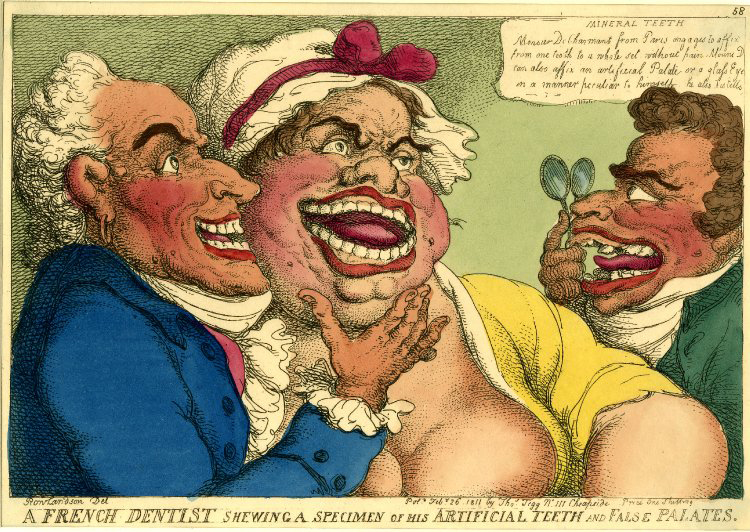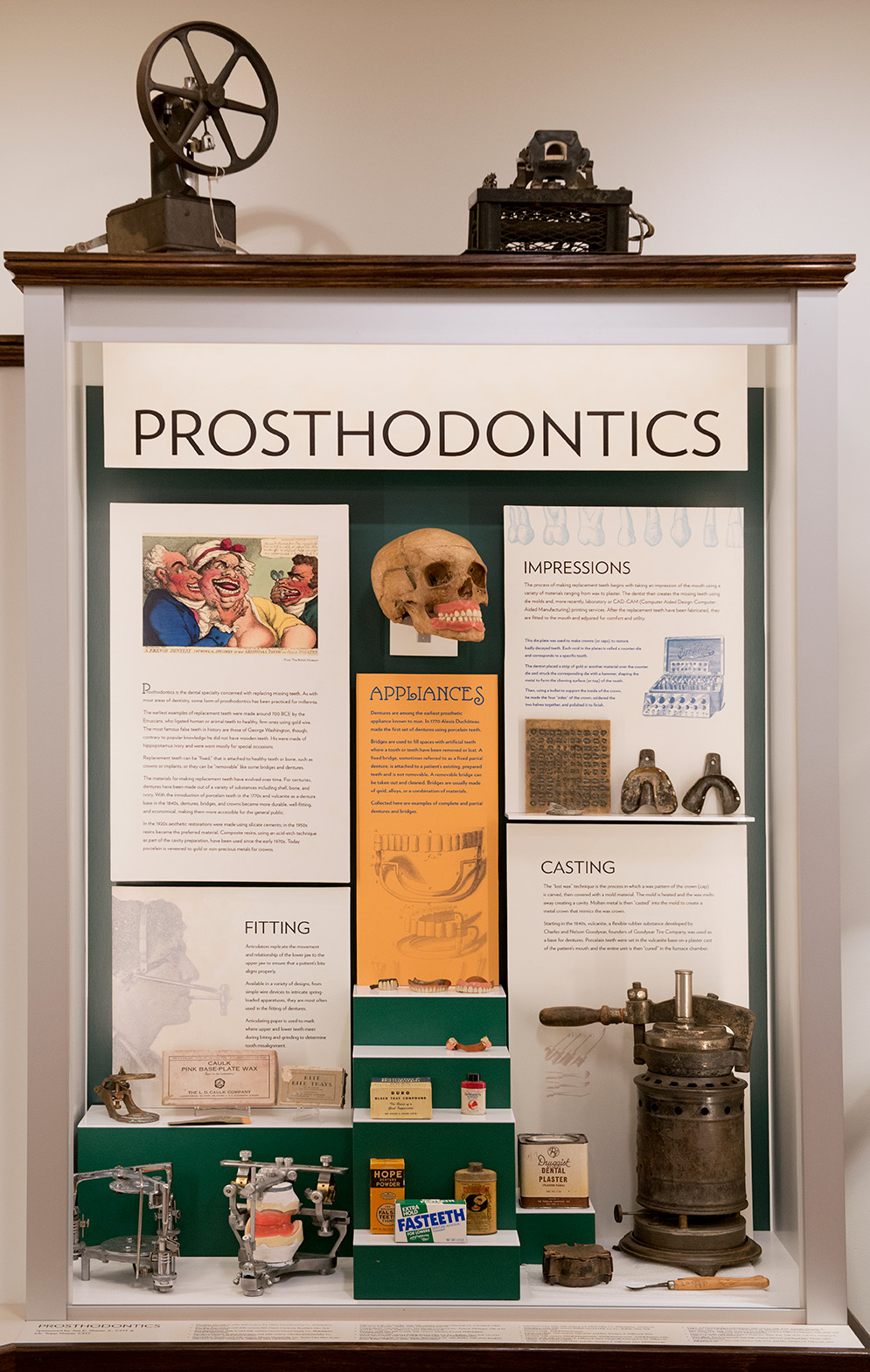

Sponsored by: Joe E. Sherer, Jr. CDT & Mr. Tripp Sherer CDT
 Prosthodontics is the dental specialty concerned with replacing missing teeth. As with most areas of dentistry, some form of prosthodontics has been practiced for millennia.
Prosthodontics is the dental specialty concerned with replacing missing teeth. As with most areas of dentistry, some form of prosthodontics has been practiced for millennia.
The earliest examples of replacement teeth were made around 700 BCE by the Etruscans, who ligated human or animal teeth to healthy, firm ones using gold wire. The most famous false teeth in history are those of George Washington, though, contrary to popular knowledge he did not have wooden teeth. His were made of hippopotamus ivory and were worn mostly for special occasions.
Replacement teeth can be “fixed,” that is attached to healthy teeth or bone, such as crowns or implants, or they can be “removable” like some bridges and dentures.
The materials for making replacement teeth have evolved over time. For centuries, dentures have been made out of a variety of substances including shell, bone, and ivory. With the introduction of porcelain teeth in the 1770s and vulcanite as a denture base in the 1840s, dentures, bridges, and crowns became more durable, well-fitting, and economical, making them more accessible for the general public. In the 1920s aesthetic restorations were made using silicate cements; in the 1950s resins became the preferred material. Composite resins, using an acid-etch technique as part of the cavity preparation, have been used since the early 1970s. Today porcelain is veneered to gold or non-precious metals for crowns.
CASTING
The “lost wax” technique is the process in which a wax pattern of the crown (cap) is carved, then covered with a mold material. The mold is heated and the wax melts away creating a cavity. Molten metal is then “casted” into the mold to create a metal crown that mimics the wax crown.
Starting in the 1840s, vulcanite, a flexible rubber substance developed by Charles and Nelson Goodyear, founders of Goodyear Tire Company, was used as a base for dentures. Porcelain teeth were set in the vulcanite base on a plaster cast of the patient’s mouth and the entire unit is then “cured” in the furnace chamber.
FITTING
Articulators replicate the movement and relationship of the lower jaw to the upper jaw to ensure that a patient’s bite aligns properly.
Available in a variety of designs, from simple wire devices to intricate spring-loaded apparatuses, they are most often used in the fitting of dentures.
Articulating paper is used to mark where upper and lower teeth meet during biting and grinding to determine tooth misalignment.
IMPRESSIONS
The process of making replacement teeth begins with taking an impression of the mouth using a variety of materials ranging from wax to plaster. The dentist then creates the missing teeth using die molds and, more recently, laboratory or CAD-CAM (Computer Aided Design-Computer Aided Manufacturing) printing services. After the replacement teeth have been fabricated, they are fitted to the mouth and adjusted for comfort and utility.
